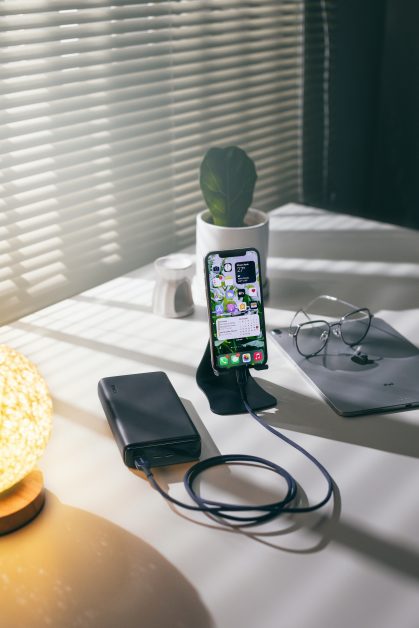Power cuts during summer are nothing new in Bangladesh. Even though the country has made significant progress in electricity production, it still cannot fully satisfy the needs of th
To add to this, we learned that due to a dollar crisis affecting the payment of coal supply dues, the 1320MW Payra Thermal Power Plant might be shut down from June 4 for some time. Hence, more power cuts.
If you don’t have a generator powering plug points, then charging electric devices is going to take hours, especially if you need to use them right then and there.
e country’s vast population during days with severe heat waves.
This article will help narrow down the best power bank for your needs.
What will you use it for?
The first thing you should consider before buying a power bank is what do you need it for? Power banks come with multiple capacities, starting at 5,000 mAh and going as far as they can go. The sky’s the limit here.
However, as the capacity goes up, so does the price, weight and overall size of the power bank. So, being able to identify your exact reasons will not only help you save money but will also help you carry that thing with you.

Let’s look at the real-life scenario. Suppose you need a power bank to deal with power cuts at regular intervals or for a short trip. Perhaps just to keep your device charged throughout the whole day you spend running around the city.
For this purpose alone, a 10,000 mAh power bank should be enough for you. With the size of smartphone batteries nowadays, I am not considering 5,000 mAh to be a valid option anymore.
Now, maybe you are a serious mobile gamer, you play games like Genshin Impact and need to use a smartphone cooler that needs to be attached to an external power source all the time.
You may also need a power bank for a group tour to Bandarbans so that you can charge all your gadgets and your tour mates’ if needed. In this case, you can easily opt-in for a 30,000 mAh power bank.
Power banks also come with 20,000 mAh capacity. That’s a sweet spot for most and is recommended if you are willing to travel abroad with the power bank.
According to the US Transportation Security Administration (TSA), Lithium-ion (rechargeable) batteries and portable batteries that contain lithium-ion can only be packed in carry-on baggage. They’re limited to a rating of 100-watt hours (Wh) per battery. With airline approval, you can bring two larger spare batteries (up to 160 Wh).
To get the Wh calculation, you need to divide the whole capacity of the power bank by 1000 and then multiply that by the voltage (V) of your power bank.
For example, if your 30,000mAh power bank has a voltage of 3.7V, the calculation would be as follows: 30,000mAh/1,000 x 3.7V = 111Wh, which exceeds the allowed capacity.
But for a 20,000 mAh power bank, it will be only 74Wh..
Portability
As mentioned earlier, the size and weight of the power bank will increase significantly as you raise the capacity. So, this is something you may need to consider while choosing the one you need.
The 30,000 mAh power bank that I regularly use for mobile gaming and charging all my gadgets weighs around 800 grams compared to the 10,000 mAh one I have, which weighs only 218 grams, less than my smartphone.
Simply put, you will be able to carry a 10,000 mAh power bank in your pockets but will definitely need to carry a bag if you raise the capacity above 10,000 mAh.
Devices used
Even though we primarily look at the capacity when purchasing a power bank, its input and output speeds are also equally important.
Before you get a power bank, you have to consider how many devices you want to use and what’s the recommended charging speed for those devices.
For example, if you are an iPhone user, a 20 Watts or 22.5 Watts power bank would be ideal for you. But if you bought a device with 65 Watts charging speed, that will take ages to charge with that 20 Watts power bank.
We also think that power banks are only meant to charge our smartphones and small smart gadgets. Maybe a tablet. But now, power banks can charge Chromebooks, some Macbooks and any device that comes with a USB-C port for charging.
If you grab a 65 Watts or 100 Watts power bank, you will be able to charge most of your laptops. Some will charge slower while some will be charged faster.
However, you do need to keep an eye on the voltage (V) value of the power bank’s output port. The charging voltage must be higher than the battery voltage. But it’s quite possible that you won’t have to go that deep since power banks that can charge laptops are marketed that way.
How safe are power banks?
Power banks are basically lithium-ion batteries that hold charges to give to other lithium-ion batteries. While there’s a concept that using power banks harms your devices, that is no longer the case in 2023 as long as you choose a power bank from a good brand, maybe Anker or Baseus, and get proper wattage.
Most of the time, a device may have trouble after getting charged with a power bank due to its own failure in controlling wattage, which is no longer the case for smartphones anymore.
But I do recommend getting a power bank that provides slightly lower wattage than what your smartphone requires.

While you shouldn’t worry about the devices you are charging with the power bank, you should have cautioned about the power bank itself.
While grabbing a power bank, look for ones that come with safety protection features, such as over-charge protection, short-circuit protection, over-temperature or over-heat protection, over-current protection or over-voltage protection.
Do not attempt to open your power bank under any circumstances. If it stops working, send it to the company if it’s under warranty or just dispose of it properly.
Maintenance
Since power banks are basically lithium-ion batteries, you need to treat them that way. Try not to let it fully drain and charge it all the way up when it goes down.
Bigger power banks often need 7 or 8 hours to fully charge. So, you can keep them charging overnight without any worries. However, if the capacity is lower and the power bank uses some fast charging technology, it will be ideal not to leave them on charge overnight.

Power banks usually don’t need much maintenance. Just make sure that you don’t drop them. The heavier they get, the more likely they are to get damaged by accidental drops.
A good power bank will be able to hold the charges for up to three to six months without any issues.
Conclusion
While any different types of power banks are Bangladesh, we recommend Anker, although it will be a little expensive.
If you want something cheaper, check out Xiaomi. Xiaomi power banks usually last longer. The 10,000 mAh power bank that I have is from Xiaomi and I forgot the year I bought it. It was used by me, my father and came back to me again. It still holds a good amount of charge.
Baseus, I think, is a nice blend of quality and price. You can consider this brand.
You can also look at the “rated capacity” besides the battery capacity before purchasing a power bank. While battery capacity refers to the capacity of the battery or battery group of the power bank, rated capacity is the output capacity of the power bank.
The rated capacity is affected by the circuit conversion efficiency and is less than the battery capacity. The more efficient the power bank is, the lesser the gap between these two will be.







































Add comment